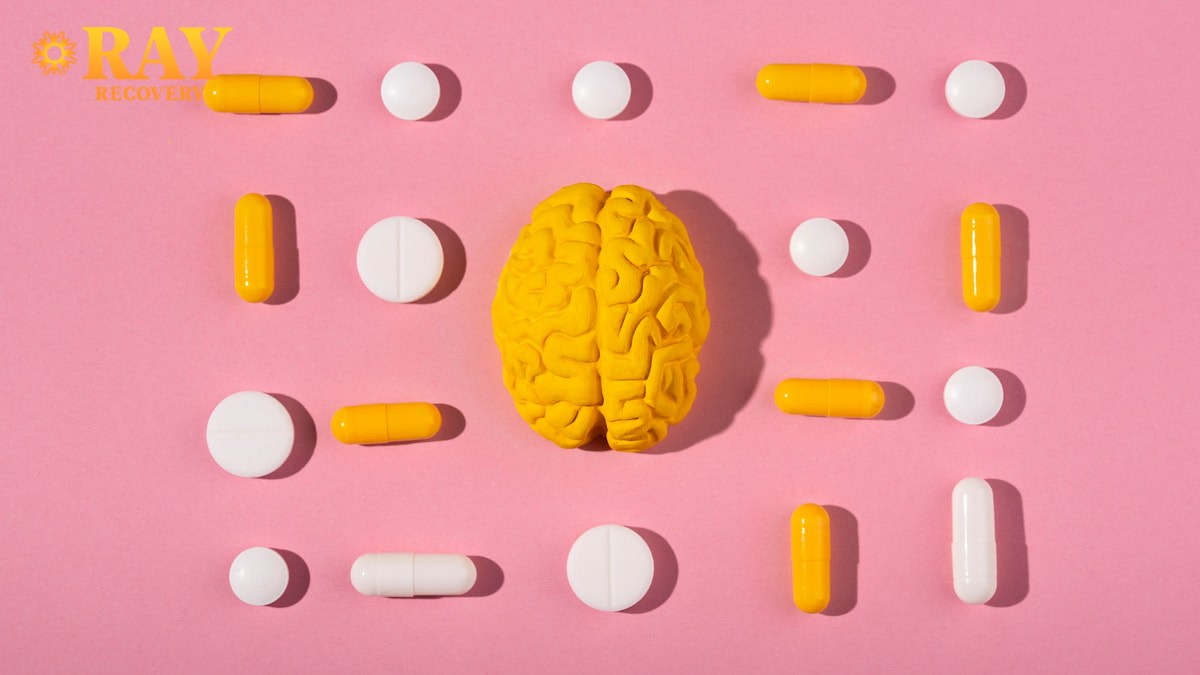Key Points
- Fentanyl’s high potency and rapid brain entry create intense reward signalling that drives repeated use.
- Chronic exposure rewires key brain circuits, generating tolerance, craving and dependence.
- Effective recovery hinges on recognising addiction as brain-driven and combining medical, psychological and social support.
Fentanyl is one of the most potent opioids ever manufactured, up to 50 times stronger than heroin and 100 times stronger than morphine. Its extreme potency makes it dangerously easy to develop dependence, often without realizing it. Even small doses can hijack the brain’s reward system, flooding it with dopamine and reinforcing compulsive drug use.
Understanding the science behind fentanyl addiction is critical for recognizing how quickly tolerance, withdrawal, and psychological craving develop. In this article, we’ll break down how fentanyl affects the brain and body, why it’s so addictive, and what evidence-based treatments can help individuals safely and effectively recover from dependence.
What Is Fentanyl and Why Is It Special?
Fentanyl is a synthetic opioid originally developed for medical use, from surgery to severe-pain conditions, because of its potency and rapid onset. Some of the key facts:
- It is approximately 50 to 100 times more potent than morphine in analgesic effect.
- Because it is highly lipophilic (fat-soluble), it moves quickly into the brain once taken.
- The rapid onset and strong effect mean that even small doses produce large changes in brain chemistry.
These characteristics, high potency, fast brain access, powerful effect, make fentanyl distinct from many other opioids. In lay terms: the rush and brain activation are so strong that the brain learns to chase that effect, which lays the groundwork for addiction.
The Brain Chemistry of Addiction: How Fentanyl Works
To understand what makes fentanyl so addictive, we must explore how it interacts with the brain. In simple terms, fentanyl “hijacks” the brain’s natural reward and pain‐control systems. Here’s how it works:
Binding to opioid receptors
Fentanyl acts primarily on the mu‐opioid receptor (MOR) in the brain and central nervous system. Activation of this receptor triggers a cascade: G-proteins are activated, downregulating cyclic AMP, reducing calcium influx and hyperpolarising key neurons. The result: pain signals are dampened, but also reward circuits get activated.
Triggering the dopamine reward system
When fentanyl binds to MORs in certain parts of the brain, especially the ventral tegmental area (VTA) and nucleus accumbens (NAc), it leads to increased dopamine release. That surge produces euphoria and reinforces the behaviour of taking the drug again. Because fentanyl is so potent and fast, that reward signal is particularly strong.
Rapid onset + high reward = stronger learning
The combination of rapid brain penetration and potent reward means that the brain forms very strong associations, “taking fentanyl equals powerful relief or pleasure.” This strong associative learning means the brain begins to prioritize seeking the drug.
Tolerance, dependence and changes in brain circuits
As use continues:
- The brain adapts to the presence of the drug (tolerance) so that higher doses are needed to achieve the same effect.
- The brain’s baseline reward functioning changes, it becomes less responsive to natural rewards and more tuned to the drug.
- During withdrawal, the user experiences negative reinforcement: the drug is taken not only for pleasure but to avoid the discomfort of absence. Recent studies show that with fentanyl, specific neuronal populations activate during use and different ones activate in withdrawal, this dual pathway amplifies addiction risk.
In short: the brain’s pain, reward and motivation systems become rewired around fentanyl.
What Unique Features of Fentanyl Make It Especially Risky

While many opioids are addictive, fentanyl has some distinct features that elevate risk:
Extremely high potency
Because it is 50–100 times more potent than morphine, even very small amounts can produce full opioid effects, or overdose. This means the margin between “use” and “danger” is very narrow.
Rapid brain entry
Its lipophilicity means it hits fast. The speed of onset strengthens the reward signal and the learning that “drugs cause big effects.” Fast onset is a known risk factor for addiction.
Broad formulations and illicit mixing
Fentanyl is available in many forms (patches, lozenges, injected etc.) and is often mixed illicitly into other drugs without the user’s knowledge. That unpredictability increases risk of unintended addiction as well as overdose.
Rewiring beyond just reward
Recent neuroscience shows that fentanyl does more than just activate reward, it induces changes in brain regions tied to stress, negative emotion, memory, and relapse circuits. One study found “distinct µ-opioid ensembles trigger positive and negative fentanyl seeking.” In other words: the cycle includes both “I want the drug because it feels good” and “I need the drug to avoid feeling bad.”
Neurotoxicity and long-term brain impact
Emerging research shows chronic fentanyl use can cause neuroinflammation, oxidative stress, and apoptosis (cell death) in cortical regions. These changes may diminish brain resilience and make recovery harder.
Because of all these features together, fentanyl stands out as an opioid with especially high addiction and overdose risk.
From Use to Addiction: The Progressive Stages

Understanding how use can progress to full-blown addiction helps families and individuals recognise warning signs and when intervention is critical.
Initial use and reinforcement
- Someone experiences fentanyl (via prescription, illicit supply or mixed drug).
- Rapid onset of euphoria or relief builds positive reinforcement.
- Repeated use solidifies the behaviour,“taking it leads to relief or reward.”
Escalation and tolerance
- More frequent use is required to get the same effect (tolerance).
- The user may switch routes (injecting, etc.) or increase dose.
- Risk of negative consequences increases (side effects, overdose risk).
Dependence and withdrawal avoidance
- The brain adapts so that normal functioning without the drug is difficult; withdrawal symptoms may appear when the drug is absent.
- Use shifts to “I need it to feel normal / avoid feeling bad” (negative reinforcement).
- As one study puts it: fentanyl activates circuits for both positive and negative reinforcement.
Addiction and relapse vulnerability
- At this point, the individual may crave fentanyl, feel little pleasure from other activities, and struggle to control use despite harm.
- Cues, stress, and environmental triggers heavily influence relapse risk, because the brain’s circuits are rewired.
- Because of the powerful effect and rewiring associated with fentanyl, relapse risk is high and withdrawal can be intense.
Why Treatment Requires a Multi-Faceted Approach

Because fentanyl addiction is driven by brain changes, complex mechanisms and environmental factors, recovery must be comprehensive. Here are key components:
Medical and pharmacological support
- Withdrawal and cravings can be severe; supervised detox and medications can reduce risk.
- Medications like buprenorphine or methadone may be used for opioid use disorder (though fentanyl’s high potency presents new treatment challenges).
- Medical monitoring is essential because overdose potential remains high, even during recovery.
Psychological and behavioural therapies
- Cognitive-behavioral therapy (CBT), motivational interviewing, and other approaches help address addictive behaviour and triggers.
- Education about how addiction rewires the brain helps individuals and families understand the process rather than assume it’s a moral failure.
Social support and life-style reintegration
- Addiction recovery involves changes in environment, relationships, routines and coping strategies.
- Group therapy and community engagement reduce isolation and reinforce new patterns of behaviour.
- Because fentanyl rewiring affects reward and pleasure from ordinary experiences, it takes time and intentional effort for life to feel meaningful again.
Long-term relapse prevention
- Ongoing monitoring, support, and relapse-prevention strategies are crucial.
- Because fentanyl triggers both positive and negative reinforcement pathways, treatment must address both: “seeking reward” and “avoiding pain/withdrawal”.
- Aftercare planning is vital, recovery is a process not a one-time event.
Practical Advice for Individuals and Families
Understanding the signs of fentanyl addiction can help you in approaching it safely and quickly, whether you’re facing it yourself or supporting someone you care about.
- Recognise the signs early: increased tolerance, secretive use, withdrawal symptoms, prioritising drugs over key life roles.
- Seek professional help quickly: the brain changes get deeper over time. Early intervention improves outcomes. Programs like intensive outpatient programs (IOP) offer structured support while allowing you to maintain daily responsibilities.
- Create a safe environment: reduce access to drugs, remove paraphernalia, ensure monitoring during recovery.
- Encourage medical supervision: detox and early recovery should never be done alone. Overdose risk is high with fentanyl.
- Support psychological healing: therapy helps rebuild life skills, address trauma, manage stress and rebuild meaning.
- Support lifestyle changes: healthy routines, good sleep, nutrition, exercise and meaningful social connection all support brain recovery. Trauma therapy is particularly important for those with co-occurring disorders.
- Set realistic expectations: recovery takes time. Brain circuits rewired by fentanyl do not revert overnight, but they can be rewired with consistent support.
- Educate family & friends: understanding that addiction is a brain disorder helps reduce shame, stigma, and encourages empathy.
If you or a loved one is struggling with fentanyl addiction, reach out to a substance abuse treatment center today. With the right support and evidence-based treatment, recovery is possible.
FAQ
Is fentanyl addiction different from other opioid addictions?
Yes, because of its exceptionally high potency, rapid brain action, and dual reinforcement pathways, it often leads to faster escalation and deeper brain changes than many other opioids.
If someone stops using fentanyl, will their brain fully recover?
Recovery is possible, but it takes time. Brain circuits adapt, but with consistent treatment, therapy, and support, many people regain meaningful functioning and rebuild life.
Does addiction mean a person lacks willpower or moral character?
No. Addiction to fentanyl is a brain-driven disorder involving rewired reward, stress and motivation systems. It is not a sign of failure but a treatable health condition.
Break Free From Fentanyl’s Grip
Overcoming fentanyl addiction requires more than willpower, it demands comprehensive, science-backed care. At Ray Recovery, we combine medical detox, behavioral therapies, and relapse prevention to address the powerful physical and psychological hold fentanyl creates. Our compassionate Ohio team helps clients restore balance, rebuild health, and regain control of their lives. Don’t wait for fentanyl to take more than it already has.
Contact us today to learn how our individualized treatment plans can help you or a loved one begin a safe, lasting recovery journey.


